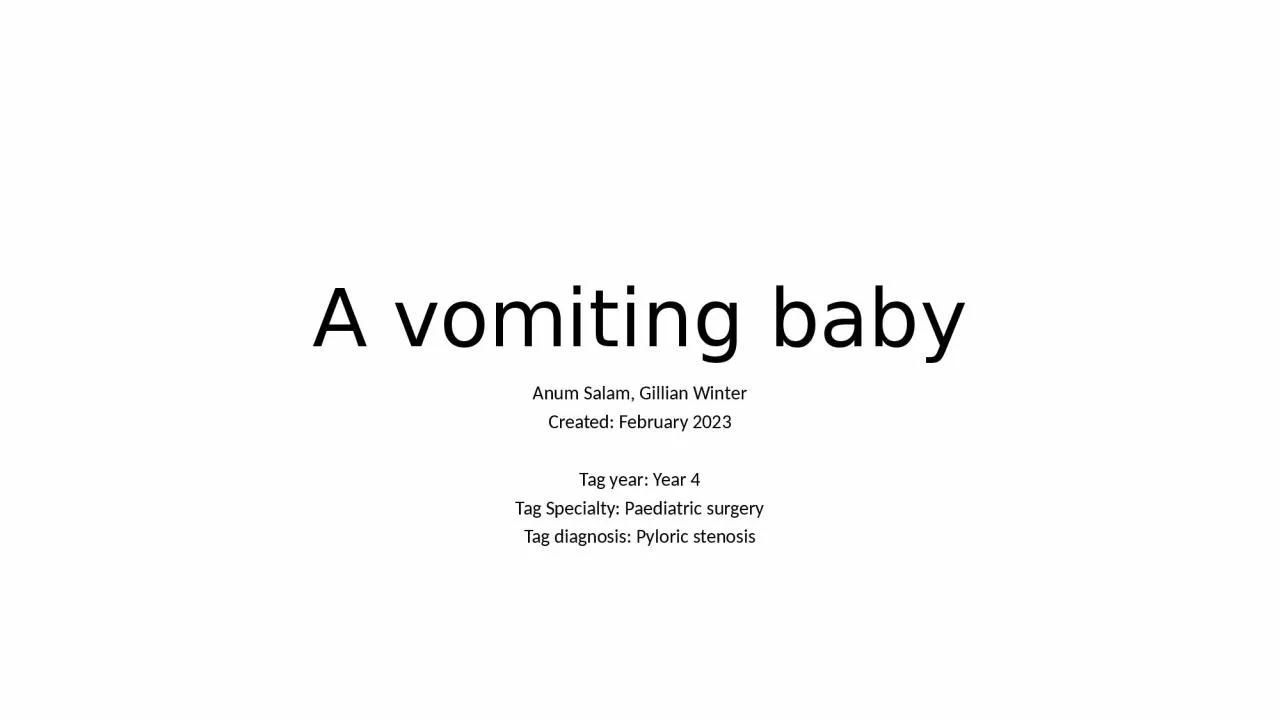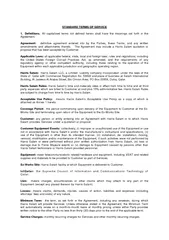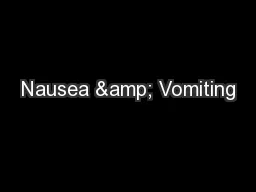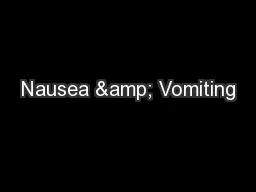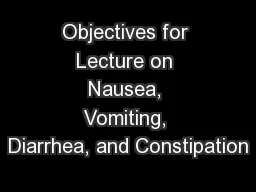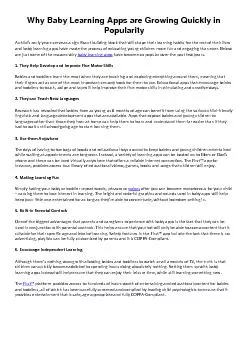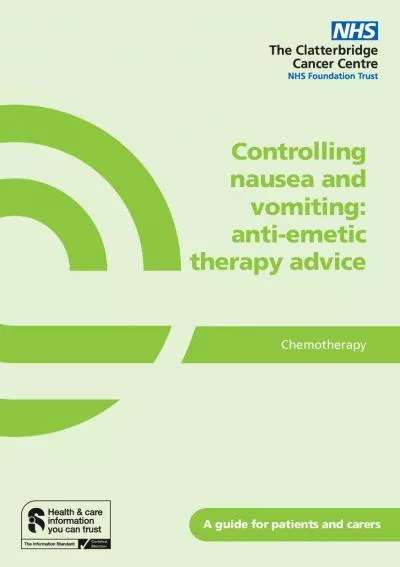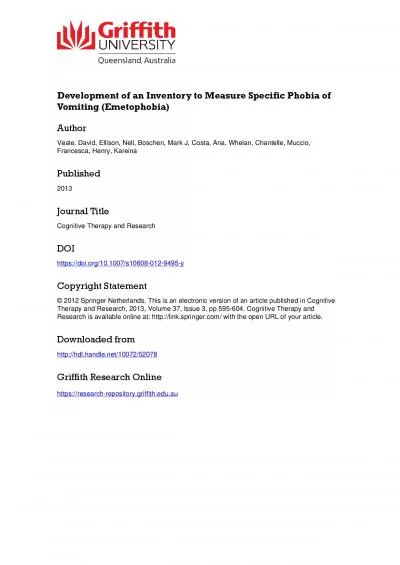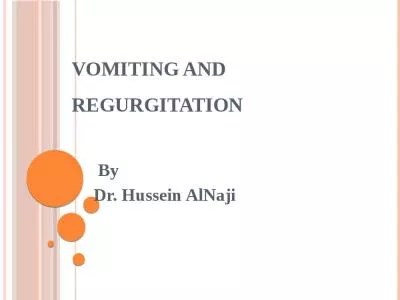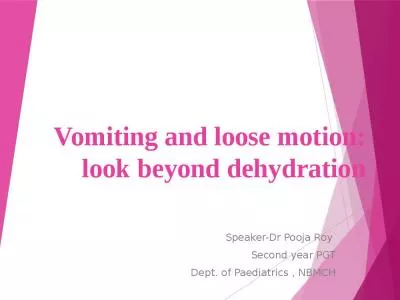PPT-A vomiting baby Anum Salam, Gillian Winter
Author : miller | Published Date : 2024-01-13
Created February 2023 Tag year Year 4 Tag Specialty Paediatric surgery Tag diagnosis Pyloric stenosis Learning aim To develop a greater understanding of the presentation
Presentation Embed Code
Download Presentation
Download Presentation The PPT/PDF document "A vomiting baby Anum Salam, Gillian Wint..." is the property of its rightful owner. Permission is granted to download and print the materials on this website for personal, non-commercial use only, and to display it on your personal computer provided you do not modify the materials and that you retain all copyright notices contained in the materials. By downloading content from our website, you accept the terms of this agreement.
A vomiting baby Anum Salam, Gillian Winter: Transcript
Download Rules Of Document
"A vomiting baby Anum Salam, Gillian Winter"The content belongs to its owner. You may download and print it for personal use, without modification, and keep all copyright notices. By downloading, you agree to these terms.
Related Documents

